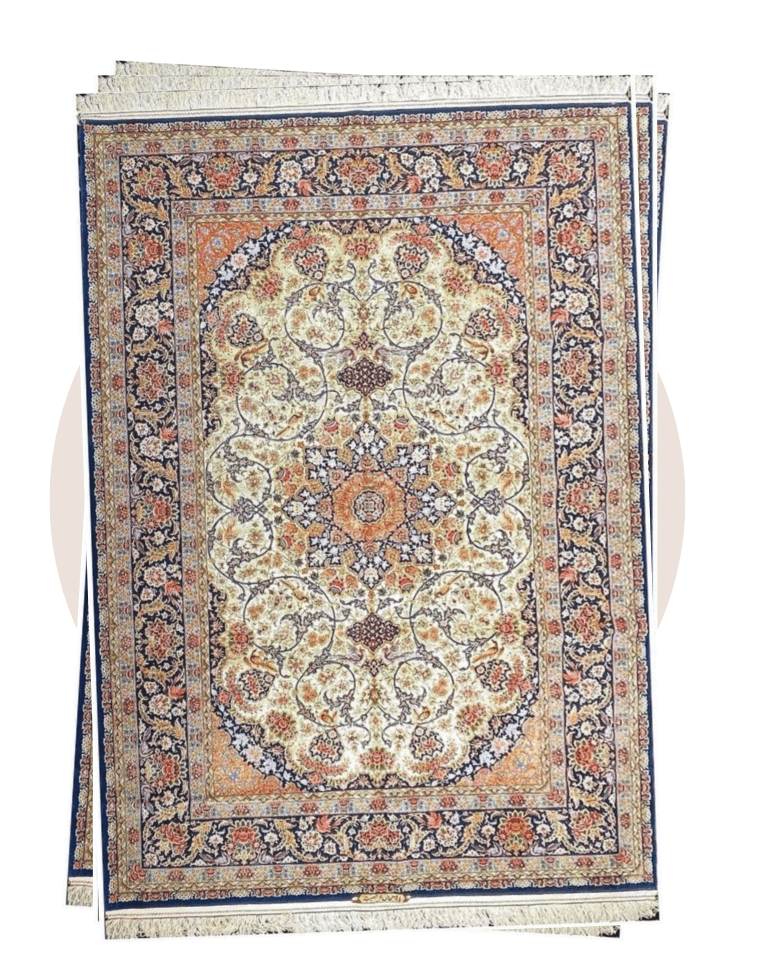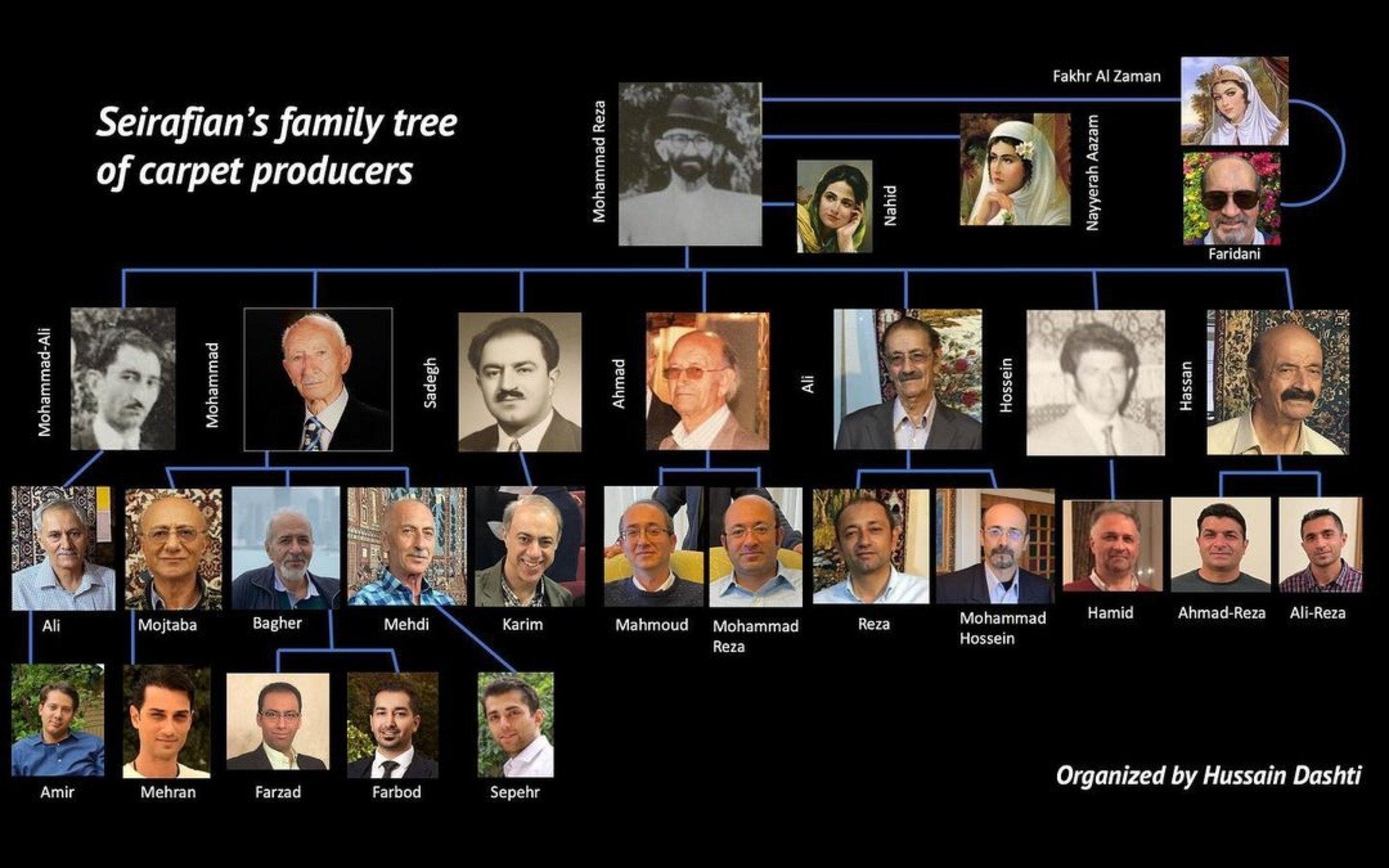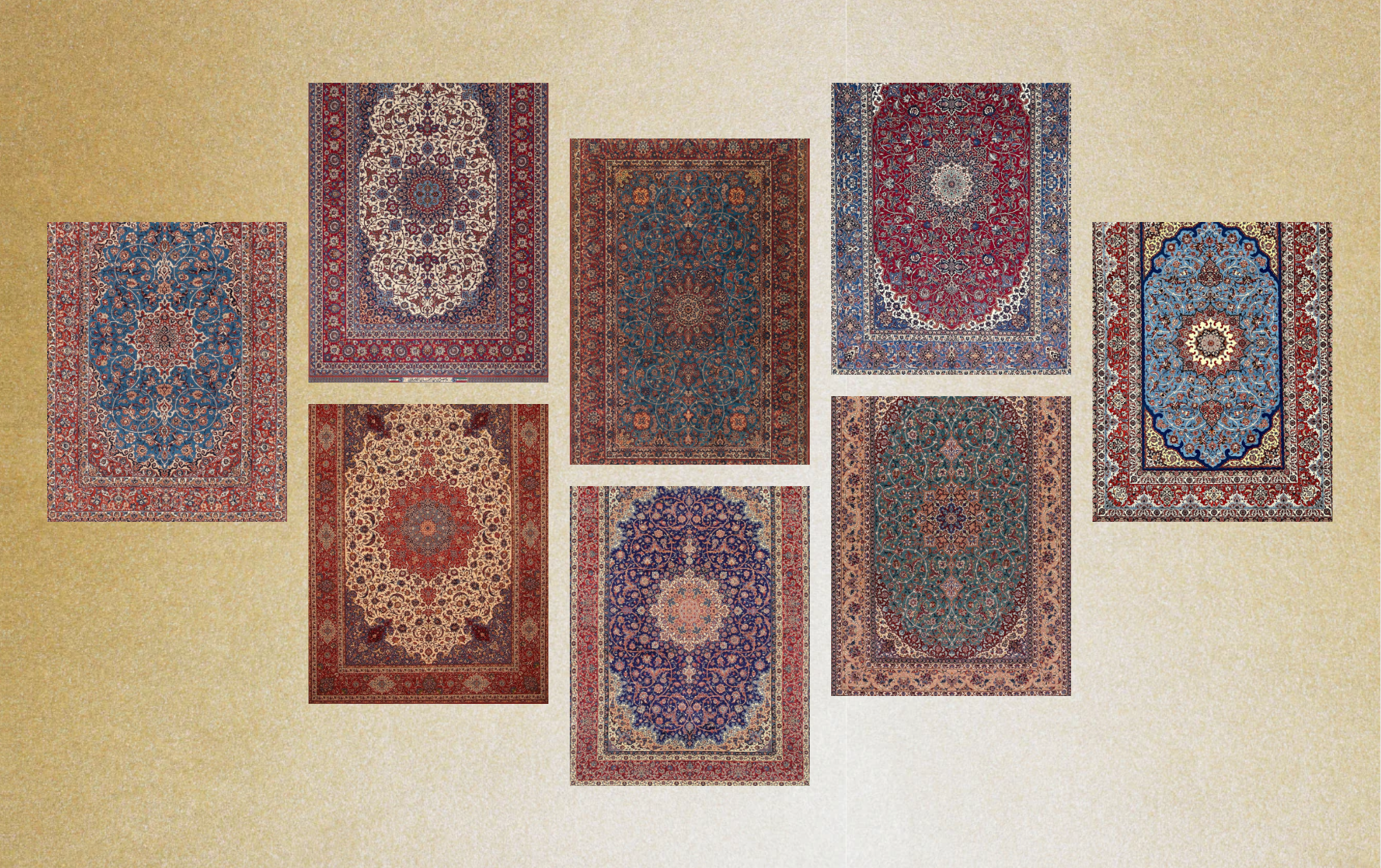"Seirafian Rugs: Legacy and Artistry of Persian Carpets"
Seirafian rugs are renowned examples of Persian carpet weaving, originating from the city of Isfahan, Iran. These handwoven rugs are celebrated for their intricate designs, high-quality materials, and meticulous craftsmanship, reflecting a centuries-old tradition of Persian artistry. Founded by Haj Agha Reza Seirafian in the early 20th century, the Seirafian rug brand has become synonymous with luxury, cultural heritage, and exceptional quality in Persian carpets. The Seirafian family, over multiple generations, has maintained and evolved the artistry and prestige associated with these rugs, making them highly sought after by collectors, art enthusiasts, and connoisseurs of Persian culture worldwide.
Haj Agha Reza Seirafian was born in 1884 into a well-regarded family in Isfahan. Initially working in the financial sector, he was inspired by the artistic potential of Persian carpets and decided to establish his own carpet-making enterprise. His vision was to create rugs that would exemplify the highest standards of craftsmanship and design, combining traditional Persian motifs with innovations that set his work apart. Seirafian rugs are distinguished by their high knot density, use of fine wool and silk, and natural dyes, resulting in pieces that are not only visually captivating but also durable and long-lasting. Seirafian’s dedication to quality quickly set a new benchmark in the industry, and his name became a mark of authenticity and excellence.
The Seirafian family's commitment to Persian rug-making has continued through successive generations, each bringing their own artistic influence and upholding the rigorous standards established by Haj Agha Reza Seirafian. This commitment has led to the creation of unique designs that blend traditional Persian elements with modern adaptations, allowing Seirafian rugs to evolve while maintaining their cultural integrity. Over time, the family has developed a distinctive style that often includes intricate floral patterns, geometric shapes, and central medallions, all of which hold symbolic meanings in Persian art.
Today, Seirafian rugs are highly regarded not only as luxurious decorative items but also as cultural artifacts that embody Persian heritage and artistic expression. The rugs have become a symbol of affluence and social standing in Iran and are widely appreciated in global markets. They are frequently passed down as heirlooms, carrying with them the legacy of Persian craftsmanship and the personal stories of those who have treasured them. Seirafian rugs are also displayed in prominent museums and cultural exhibitions, where they are celebrated for their role in preserving and promoting Persian textile art.
In addition to their aesthetic and cultural significance, Seirafian rugs are known for the ethical practices associated with their production. The Seirafian family has historically emphasized fair treatment of weavers and artisans, countering stereotypes of exploitation in the carpet industry. This focus on ethical craftsmanship further enhances the brand's reputation and aligns with the family’s dedication to honoring and preserving Persian traditions.
Seirafian rugs continue to be crafted with the same attention to detail and passion that defined their founder's vision. From their origins in Isfahan to their recognition on the global stage, these rugs stand as a testament to the enduring appeal of Persian art. Whether displayed in a collector’s home, a museum, or passed down through generations, Seirafian rugs are admired not only for their beauty but also for the cultural heritage they represent.






















